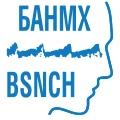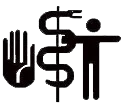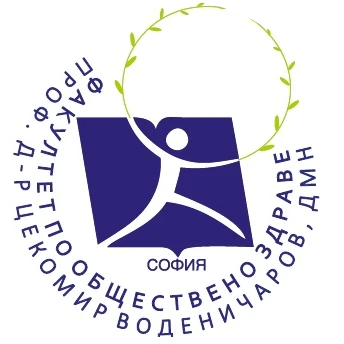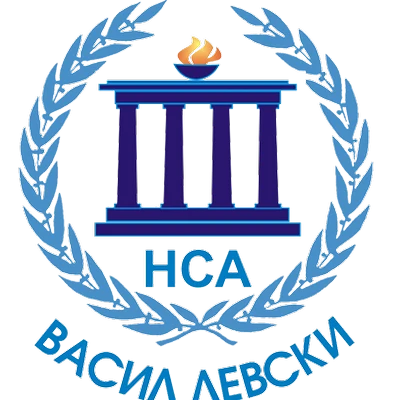Neuro Rehab Izgrev is closely specialized in disorders of the central and peripheral nervous system.
Depending on the stage of the disease, therapy can be prolonged or reduced to only a few procedures.
Our goal and priority is through all the necessary techniques of specialized manual therapy and apparatus physiotherapy to contribute to your recovery as quickly and efficiently as possible!
Stroke
Cerebral stroke is an acute disorder of cerebral blood circulation, provoked by insufficient blood supply to a certain area of it. Ischemic stroke is due to the blockage of a cerebral blood vessel, while in hemorrhagic stroke there is cerebral hemorrhage..
The most common disorders in the chronic period are related with loss of active movements (paresis, muscular weakness), spastically increased muscle tone, negative changes in tissue elasticity (inelasticity), sensory impairment, disuse of affected limbs (negligence), atypical and ineffective movement patterns in the affected side, speech and visual disorders and pathological gait.
How is it treated
Immediately after receiving a stroke, the patient needs urgent active treatment. The sooner it begins, the better the chances of a good recovery. Rehabilitation aims to retrain the patient and regain lost motor functions as a result of the cerebrovascular accident. The fastest and best results can be achieved when the necessary rehabilitation is started in time and upon application of specialized neurorehabilitation methods, such as Bobat, PNF and others.
What is the focus of our rehabilitation?
- To reduce spastically increased muscle tone
- Restoration of active movements in the affected part of the body
- The patient to learn to walk independently as quickly as possible
- To retrain and include the affected hand in daily activities
We prepare an individual methodology for each of the patients according to their capabilities and their future needs. We work according to world-proven neurorehabilitation approaches. The stroke rehabilitation program uses innovative techniques to facilitate certain movements, stretching and strengthening exercises, balance and gait training. Our specialists are well prepared with serious practice from hospitals and specialized centers fighting the effects of stroke.
Traumatic brain injury (TBI)
Traumatic brain injury is the most dangerous and unpredictable type of injury, the consequences of which are extremely difficult to predict and also to control.
Road transport accidents, work accidents and other accidents are common causes. These injuries kill more than a million people every year and leave many more disabled for life. The most serious problem that remains after the experienced trauma are the impaired motor and cognitive functions. They arise as a result of lost neurons and the broken connection between them.
How are they treated?
Depending on the degree of damage, the presence and complexity of brain edema, brain injuries are divided into many types, each of which has its own characteristics, both in terms of therapy and rehabilitation.
The process of rehabilitation after a skull injury requires an integrated approach and regularity in motor deviation. In order for the recovery course to have the maximum effect, it is necessary to start its implementation as early as possible! The time that has passed from the moment of injury to the beginning of the rehabilitation process is of great importance for a better and successful recovery.
What is the focus of our rehabilitation?
- minimizing movement disorders
- improving the psycho-emotional state of the patient
- improving the self-service possibility
- improvement of balance, movement coordination and gait
Everyone has a chance to improve their mobility if the injured person is provided with the necessary specialized help in a timely manner.
The exact neurorehabilitation approach and the motivation of the patient with strong support from the relatives are extremely important.
How effective this fight will be depends on the accuracy of diagnostic measures, the correct choice of treatment and the course of recovery after the brain injury.
Spinal cord injuries
Spinal cord injuries represent damage to the various elements of the spine, spinal cord and roots, becoming the cause of severe neurological symptoms.
They are classified according to their clinical picture and the degree of involvement of the individual spinal cord segments. They often occur after road traffic accidents, occupational accidents, sports and household injuries, as well as inappropriate diving.
Motor deficits of varying severity occur in spinal cord injuries. They depend on which area of the spinal cord is injured, and whether the spinal cord is severed in whole or in part. Loss of nerve function below the level of injury is observed. Injuries in the cervical region lead to quadriplegia or quadriparesis, and injuries in the lower regions of the spinal cord cause paralysis affecting the legs and lower body called paraplegias.
How is it treated?
Surgical or conservative treatment is applied. An important part of the recovery process is specialized rehabilitation with a correctly placed assessment of motor potential.
What is the focus of our rehabilitation?
- to increase the muscle strength of the extremities
- to increase muscle strength and control of the torso
- to reduce spastically increased muscle tone
- to improve balance
- improving fine motor skills
- training in sitting, transfer, standing and walking
- increasing psycho-emotional tone
- increase self-care ability
We will put together a specialized rehabilitation complex tailored to the level of damage and the individual capabilities and needs of the patient.
Only a properly selected neurorehabilitation program will contribute to a high-quality and correct stepwise recovery.
Multiple sclerosis
Multiple sclerosis is a chronic autoimmune demyelinating and degenerative disease of the nervous system with a probable genetic predisposition, predominantly affecting young people. The forms of multiple sclerosis are relapsing-remitting, secondary progressive, primary progressive and relapsing-progressive. Multiple plaques of demyelination are formed in various areas of the brain and spinal cord. Neurological symptoms depend on the localization of multiple plaques. Very often, the first symptom of the disease is unilateral optic neuritis.
How to treat multiple sclerosis?
The treatment of multiple sclerosis is divided into two groups.
Treatment of the acute attack and inter-attack treatment. During the acute attack, corticosteroids are prescribed according to schedules. Interacute treatment aims to modify the course of the disease, aiming at prevention of a new attack or delaying the progression of the disease. Interferons, immunoglobulins and immunosuppressants are prescribed.
The focus of rehabilitation is directed at
- reducing the severity of neurological symptoms
- забавяне на прогресията на заболяването
- restoration of lost motor functions of the body
- prevention of complications
The attention of rehabilitation is focused on alleviating exacerbations and slowing down the progression of the disease. General strengthening procedures that do not tire but strengthen the body are extremely important.
Physiotherapy and therapeutic gymnastics are an important and integral part of the fight against multiple sclerosis. Submitted by a specialist with extensive experience in the field of neurorehabilitation can only help prevent future complications and disease progression.
Peripheral nerve injuries (PNI)
Peripheral nerve injuries are classified as open and closed, and according to the mechanism of occurrence, laceration and contusion, stretching and twisting, compression ischemia, thermal and electrical, injection trauma. The most popular is the Seddon classification, according to which peripheral nerve injuries can be divided into three grades according to the severity of the injury.*
Neuropraxia in which nerve conduction is interrupted but the nerve is intact. This injury is reversible. ** Axonomesis where the axons and myelin sheath of the nerve are anatomically interrupted, but the endoneurium, perineurium, and epineurium are intact. The clinical picture of such damage is characterized by a complete loss of all motor, sensory and autonomic functions distal to the level of damage. *** Neuromesis, where the injury has complete anatomical disruption of the nerve trunk to the extent that spontaneous regeneration is impossible. In this case, surgical intervention on the nerve is necessary, which can be of a different nature.
How are peripheral nerve injuries treated??
Depending on the degree of damage, rehabilitation can last from 1-2 months to more than a year in the case of a completely severed nerve.
Specialized neurorehabilitation is a long and necessary process. In the best case, on average, the nerve grows 1mm per day. The intake of B vitamins is essential. Electrostimulation with low frequency currents, massage and exercises according to manual muscle testing assessment are recommended.
The focus of rehabilitation is:
- to do prevention of subsequent complications
- to maintain good trophic conditions of the affected area
- to increase muscle strength
- to provoke active movements
- to facilitate the daily activities of the injured person
Our main goal is maximally fast and high-quality regeneration of peripheral nerves, by improving muscle tone and correcting muscle imbalance. Improving nerve conduction and normalizing muscle strength. Staged recovery accompanied by analytical gymnastics leads to extremely good results in working with patients who have suffered peripheral nerve injuries.
Rehabilitation after fractures
Fractures are the most severe damage to the musculoskeletal system. In them, the integrity of the bones or articular surfaces is disturbed. They have many characteristics and specifications. According to the etiology, they can be traumatic or pathological. According to the mechanism, direct, indirect and avulsion fractures. According to quantitative characteristics, fractures are complete, incomplete, fissures, green stick type fracture and infraction. According to their age, they are fresh, old, badly healed, non-healing and false joint. According to the localization of the fragments, fractures are undisplaced, displaced fractures, angularly displaced, laterally displaced, etc.
In fractures, the clinical picture is limb deformation, pain, edema, impaired joint function, shortened limb, rotated limb, pathological mobility, crepitations.
How are fractures treated?
The treatment of a fracture can be operative or non-operative.
In the case of non-operative treatment, repositioning of the fragments is carried out with subsequent immobilization, which can be a plaster splint, a corset, a tutor, etc. In case of non-replaceable closed fractures, displaced intra-articular fractures, open fractures, non-healing fractures, etc. an operative intervention is performed. And the best-done operation needs subsequent specialized rehabilitation so that the injured person can return to his previous way of life.
The focus of rehabilitation is:
- to reduce swelling and pain
- to strengthen muscles and improve movements
- to make walking easier
- to improve the fine motility of the fingers
We will speed up the healing process through all the methods of physical therapy. Through specialized kinesitherapy we will reduce pain and stiffness and help muscles and joints work at their full volume and capacity. Our goal is to improve and fully restore the patient’s physical strength and mobility.
Disc herniation
The main functions of the human spine are supportive, dynamic and protective. It consists of 7 cervical, 12 thoracic, 5 lumbar, 5 sacral and 4-5 caudal vertebrae between which the intervertebral discs are located. They are composed of an outer annulus fibrosus that surrounds an inner gel-like center and cartilaginous laminae adjacent to the vertebral bodies. The intervertebral discs along with the facet joints allow the spine to move and soften the load.
Depending on the degree of displacement of the nucleus, disc herniations are classified into 3 main types and they are protrusion, extrusion and sequestration. They can be unilateral or bilateral, single or multiple. Risk factors for disc herniation are trauma, heavy physical work, heredity, incorrect posture in sedentary occupations, etc. A common mechanism for a herniated disc is weight lifting combined with trunk flexion and rotation. A herniated disc can develop anywhere along the spine, but the most common locations are in the lumbar region and in rarer cases in the cervical region. Herniated disc symptoms vary depending on the size, location, and severity of the herniated disc. If the herniated disc is not pressing on nerve structures, there may be no symptoms or only back pain. In cases where there is a pinched nerve in the cervical region, it is typical to have pain in the neck area, stiffness, numbness, tingling, impaired sensation, vertigo, nausea or muscle weakness in the arm. A pinched nerve in the lumbar region can cause low back pain, pain down the back of the leg, pain down the front of the thigh, numbness, tingling, burning pain, muscle weakness, difficulty walking, retention or leakage of urine, numbness of the genitals, and loss of sexual functions. The diagnosis is made on the basis of the medical history and at least one imaging diagnostic, nuclear magnetic resonance or computer tomography.
How are herniated discs treated?
The treatment of disc herniations is complex. In the acute period, it can be medical and surgical, and in the chronic period with atypical analgesia and necessarily specialized neurorehabilitation. It is always applied after the acute period of the disease has passed and the pains have become bearable. Our tasks are the application of a specialized individual kinesitherapy program in which the workload is strictly controlled. Selected specialized exercises with a measured dosage combined with innovative physiotherapy.
Our goal is:
- pain reduction
- reducing stiffness and facilitating movements
- increasing muscle strength and spine mobility
- increasing the general tone of the patient
Pain in the back, neck and waist
Back or neck pain can be of a different nature, and it is very important to determine the cause of their occurrence after a thorough examination by a specialist. Only after finding the source of the disease, it can be treated correctly and the prescribed rehabilitation therapy can achieve the desired success. The causes of back and neck pain can originate from disc herniation, narrowing of the spinal canal (spinal stenosis), wear of the intervertebral discs (osteochondrosis), osteoarthritis of the facet joints (facet syndrome). Also from injuries, driving for a long time, an accident, prolonged work in front of a computer, heavy physical work, an incorrect shape of the spine and in rare cases, oncological diseases. Unfortunately, most of them have a deeper origin and the effectiveness of the therapy depends on future long-term treatment and on a correct diagnosis with subsequent prevention.
The most common symptoms are local pain in the back, neck or lower back, shooting pain in the arms or legs, muscle cramps, a feeling of stiffness, moving pain in the chest.
How neck, back and lower back pain is treated?
Specialized rehabilitation can be used prophylactically to prevent more serious diseases, as well as the only effective means to restore the patient’s tone with a pain-free life.
Our goal is:
- to reduce the pain
- to make the spine more flexible
- to reduce stiffness and muscle spasms
- to correct the wrong posture
- to increase the general tone of the patient
Modern apparatus physiotherapy combined with individual kinesitherapy will contribute to the effective removal of neck, back and lower back pain. The neurorehabilitation team of Izgrev approaches each patient individually, sparing no effort and knowledge gained from our extensive practice.
Radiculitis
The peripheral nervous system is an extension or branch of the central nervous system. Generally speaking, the function of peripheral nerves is to connect the central nervous system (brain and spinal cord) to the limbs and organs of the body. Peripheral nerve tissues have no specific protection, which makes them more vulnerable to mechanical and toxic effects.
Radiculitis means inflammation of a nerve root and can occur at any level of the spine. The reasons are different, but the most common are overcooling, overloading the spine, bad posture, disc disease, spondylolisthesis, injuries, osteochondrosis, tumors, etc. The symptoms are sharp, shooting, burning pains, which increase with coughing and sneezing, movements in the spine and limbs. Muscle spasm may also occur. Sensations of touch, pain, heat or cold may weaken or intensify.
Treatment
Most often, the treatment is conservative, and in rarer cases, surgical.
In the acute phase, conservative treatment includes rest for about 10 days and drug therapy including non-steroidal anti-inflammatory drugs, analgesics, vitamins of the B group, etc. In the sub-acute phase, specialized physiotherapy, kinesitherapy, extension therapy and manual therapy are included.
The focus of our rehabilitation is:
- to reduce the pain
- to improve the trophic
- to reduce inflammation and compression
- to improve the mobility of the spine
Plexitis
Plexitis means inflammation of a nerve plexus (plexus).
The symptoms of damage to the cervical plexus are pain in the neck, back of the head and behind the ear accompanied by muscle tension. In the more severe cases, a forced position of the head turned to the side may be reached. Muscle atrophy may also occur. Brachial plexus can be affected by inflammatory or dystrophic processes, and sometimes by traumatic reasons. Includes shoulder pain, muscle weakness, loss of sensation.
Paralysis type Duchenne – Erb. The upper part of the brachial plexus is damaged. The proximal musculature of the hand is affected, most often unilaterally, and the function of the fingers and wrist is preserved. Pains in the scapula and shoulder region are characteristic, intensifying with head and arm movements.
Paralysis type Dejerine – Klumpke occurs when the lower part of the brachialis plexus is damaged, weakness and atrophy of the distal muscles of the forearm and wrist are expressed.
The causes of damage to the lumbar plexus can be trauma, wear and tear processes in the vertebrae, disc sequestrations, a narrow spinal canal, tumors, inflammatory processes, radiotherapy, diabetes, etc. Pain is found in the lumbar and sub-lumbar regions, in the front of the thigh and on the inside of the lower leg. Muscle weakness is also observed, and the knee reflex is reduced or absent.
In case of damage to the sacral plexus, pain is the leading symptom. It is more pronounced around the hip joint, along the sciatic nerve (n. Ischiadicus) and its branches. The Achilles and cutaneous plantar reflexes are weakened or absent.
Movements in the hip, knee joint, flexion and extension of the foot and toes are difficult. A stepping gait occurs.
Treatment
Plexitis can be treated conservatively or surgically. Conservative treatment includes specialized physiotherapy and cryotherapy, and therapeutic massages are an indispensable part of the treatment of this type of disease. The duration of rehabilitation and the choice of procedures depends on the degree of involvement of the peripheral nervous system and the period in which the patient is.
The focus of rehabilitation is:
- to reduce the pain
- to reduce the inflammation
- to improve the trophic
- to increase the muscle strength of weakened muscles
Our goal is, after establishing the correct diagnosis and a timely response, to avoid surgical treatment, which can lead to severe manipulations such as cutting out the fibrous tissue, etc. Performing a specialized neurorehabilitation course is extremely important for the patient’s lasting and high-quality recovery.
Innovative clinical thinking at the structural level beyond the boundaries of the standard guideline in classical rehabilitation
Neuro Rehab Izgrev successfully applied specialized therapeutic methods for diseases and injuries of the peripheral nervous system as a result of inflammation and/or compression by bone structures such as facial nerve paralysis, mononeuritis of the N. Radialis, mononeuritis of the N. Medianus, mononeuritis of the N. Ulnaris, syndrome carpal tunnel syndrome, Guyon’s box syndrome, cubital tunnel syndrome. Compression of the N. Tibialis in the area of the tarsal canal.
Polyneuropathies: infectious polyneuropathies, toxic polyneuropathies, metabolic and hereditary polyneuropathies, Guillain Barre syndrome.
We accept patients with central nervous system diseases such as: Parkinson’s, spinal stroke, neurological complications after HIV and AIDS, rehabilitation after removal of nervous system tumors and others.
We work according to world standards and apply the most modern methods in neurorehabilitation


